 Xdrive has announced an expansion to their service that gives roaming consumers wireless access to their files through any Internet-connected cell phone, smart phone or handheld device.
Xdrive has announced an expansion to their service that gives roaming consumers wireless access to their files through any Internet-connected cell phone, smart phone or handheld device.
With a turn of phrase worthy of the cheesiest made-for-TV pilot, Xdrive implores users to “cut the cord and roam freely with your files” and skip gaily into a new digital dawn “liberated from the confines of a wired world” – possibly while “sipping Mai Tai’s on the sands of Bora Bora”.
Eh, what?!
Back in the real world, we can tell you that Xdrive’s new wireless service allows mobile subscribers to access their files and folders, send faxes, email documents, listen to music and view slide shows while on the move.
Users must first upload their files to their Xdrive account, and using WAP (wireless application protocol) technology they can access their files on the company’s secure server.
The service allows people access to a wide range of stored files – Word documents, Excel spreadsheets, digital photos and videos, QuickBooks files, and MP3s etc – through any Web-enabled hand-held device.
![]() “As the Digital Lifestyle continues to become more and more engrained into our everyday life, people are beginning to break away from the concept of one stationary computer,” states Xdrive CEO Brett O’Brien, “People strive for mobility, yet yearn for connectedness. Xdrive’s new wireless features give people just that.”
“As the Digital Lifestyle continues to become more and more engrained into our everyday life, people are beginning to break away from the concept of one stationary computer,” states Xdrive CEO Brett O’Brien, “People strive for mobility, yet yearn for connectedness. Xdrive’s new wireless features give people just that.”
Xdrive costs US$9.95 (£5.20, €7.6) or US$99.50 (£50.20, €70.6) annually, with subscribers having 5 Gigabytes of online storage space and access to all of the Xdrive applications and services.
The company offers new subscribers a 15-day free trial period at http://www.xdrive.com
 DL: Is the site entirely bankrolled by Brewster Kahle (The Internet Archive) or are there plans to raise revenue through advertising/affiliate programs etc?
DL: Is the site entirely bankrolled by Brewster Kahle (The Internet Archive) or are there plans to raise revenue through advertising/affiliate programs etc? 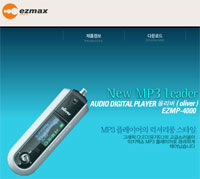 MP3 playing device includes software for sending and receiving Internet-based phone calls.
MP3 playing device includes software for sending and receiving Internet-based phone calls. 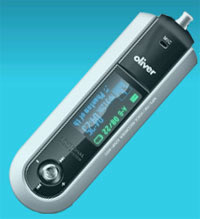 Ezmax demonstrated the device at their stand at CeBIT, plugging the player into a notebook PC and successfully making a call via the VoIP dialling software.
Ezmax demonstrated the device at their stand at CeBIT, plugging the player into a notebook PC and successfully making a call via the VoIP dialling software. 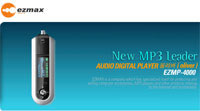 In addition, the device is capable of voice recording and sports a two-colour (blue and yellow) 128 pixel by 64 pixel OLED screen.
In addition, the device is capable of voice recording and sports a two-colour (blue and yellow) 128 pixel by 64 pixel OLED screen. 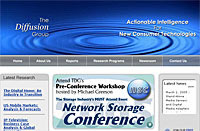 Evidence is beginning to amass that two of the most hyped products in the early digital home market will be lucky if they manage to reach niche market status in the next few years.
Evidence is beginning to amass that two of the most hyped products in the early digital home market will be lucky if they manage to reach niche market status in the next few years.  Hitachi has announced that it will ramp up its output of consumer hard drives this year as it strives to take advantage of the soaring storage demands of MP3, PVR and mobile phone markets.
Hitachi has announced that it will ramp up its output of consumer hard drives this year as it strives to take advantage of the soaring storage demands of MP3, PVR and mobile phone markets. 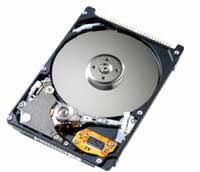 A smaller version of the current 1-inch drive, code-named Mikey, comes out later this year, with capacious 2.5-inch drives – holding up to 500GB – being targeted at makers of DVRs and home servers.
A smaller version of the current 1-inch drive, code-named Mikey, comes out later this year, with capacious 2.5-inch drives – holding up to 500GB – being targeted at makers of DVRs and home servers. 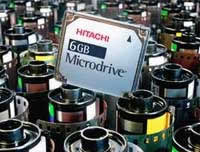 “Hitachi’s intensified focus in the CE segment hard drive will mean good news for end-users as we work on developing smaller, high-capacity hard drives that are more rugged, require less power and cost less.”
“Hitachi’s intensified focus in the CE segment hard drive will mean good news for end-users as we work on developing smaller, high-capacity hard drives that are more rugged, require less power and cost less.” 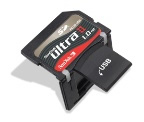 SanDisk today introduced the less-than-snappily entitled SanDisk Ultra(TM) II SD(TM) PLUS, an innovative SD flash memory card with built-in USB connectivity.
SanDisk today introduced the less-than-snappily entitled SanDisk Ultra(TM) II SD(TM) PLUS, an innovative SD flash memory card with built-in USB connectivity. 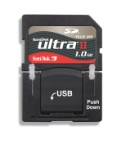 SanDisk expects the card to initially be available in two capacities with the 512MB card having a suggested retail price of $109.99 (£58, €84) and the 1GB version carrying a suggested price of $149.99 (£79, €115)
SanDisk expects the card to initially be available in two capacities with the 512MB card having a suggested retail price of $109.99 (£58, €84) and the 1GB version carrying a suggested price of $149.99 (£79, €115)  Pretec Electronics have announced an 8GB USB drive, that they’re calling the i-Disk II, at CES today. Currently it’s the highest capacity key chain drive and the second to market.
Pretec Electronics have announced an 8GB USB drive, that they’re calling the i-Disk II, at CES today. Currently it’s the highest capacity key chain drive and the second to market.  In an effort to keep up with the demands of the ever growing appetite for digital storage, Hitachi has announced a 500-Gigabyte drive.
In an effort to keep up with the demands of the ever growing appetite for digital storage, Hitachi has announced a 500-Gigabyte drive. 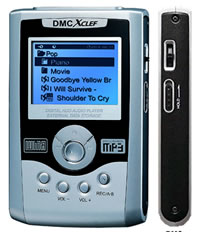 Just when you were find it tough to find enough music to fill your 40Gb iPod, Digital Mind comes along with the DMC Xclef 500 portable MP3 music players. Christened “big brother” it has the largest available storage space of any portable music player on the market. With a price tag of $449.00 (~€355), this bouncing 100Gb baby is capable of holding more than 25,000 music files, so now all you need is the time to listen to them – close to two months of 24 hours a day listen.
Just when you were find it tough to find enough music to fill your 40Gb iPod, Digital Mind comes along with the DMC Xclef 500 portable MP3 music players. Christened “big brother” it has the largest available storage space of any portable music player on the market. With a price tag of $449.00 (~€355), this bouncing 100Gb baby is capable of holding more than 25,000 music files, so now all you need is the time to listen to them – close to two months of 24 hours a day listen.